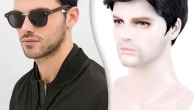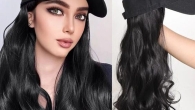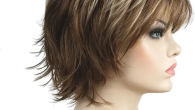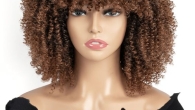
A crowning achievement: A History of Wig Throughout Time
Ever wondered when wig were invented? Believe it or not, wigs have a surprisingly long and fascinating history, dating back thousands of years. Throughout different cultures and eras, wigs have served a variety of purposes, from practical sun protection to a symbol of social status. So, delve into this article and discover the surprising journey of wigs from ancient Egypt to the modern world.
Unveiling the Origins of Wig: Ancient Egypt and Beyond (3400 BC – 1500 AD)
The earliest evidence of wigs points to ancient Egypt around 3400 BC. The scorching desert sun posed a challenge for Egyptians, leading them to shave their heads. But a bald head wasn’t exactly fashionable. Wigs offered a stylish solution, protecting the scalp from the sun while maintaining a desired appearance. Interestingly, wig materials varied based on social class. Upper Egyptians donned elaborate wigs made from real human hair, sometimes even incorporating precious metals like gold. In contrast, lower classes wore simpler wigs crafted from palm fibers or wool.

Wigs weren’t exclusive to Egypt. Across the ancient world, civilizations like Assyria, Greece, and Rome embraced wigs for various reasons. In Assyria, elaborate wigs were a symbol of royalty and power. The Greeks used wigs for theatrical performances and religious ceremonies. Similarly, Roman women of the upper class wore wigs made from blonde German hair, a symbol of beauty and status.
Wigs Take Center Stage: The Renaissance and the Rise of Fashion (1500 – 1700 AD)
After a period of decline during the Middle Ages, wigs made a dramatic comeback in the 16th century during the Renaissance. This era saw a renewed interest in classical art and fashion, where wigs played a prominent role. Queen Elizabeth I of England is a famous example, known for her iconic red wigs, often styled high and adorned with jewels. Wigs in this period were primarily worn by the wealthy as a status symbol, signifying social standing and sophistication.
The 17th century witnessed a further explosion of wig popularity, particularly in France. King Louis XIII’s preference for wigs triggered a widespread trend. Men’s wigs, known as periwigs, became increasingly elaborate. These wigs were often long, cascading down the shoulders and back, and styled with curls and ribbons. Powdered wigs, meticulously styled and dusted with white powder, became the height of fashion for both men and women. Wigmakers became skilled artisans, and the wig-making industry flourished.

The Reign of the Elaborate: The 18th Century and the Powdered Peruke (1700 – 1800 AD)
The 18th century saw wigs reach their peak in terms of extravagance. Wigs became even more elaborate, reaching incredible heights and incorporating fantastical elements like ships, birds, and even miniature gardens. Think Marie Antoinette’s infamous towering wigs, a symbol of her opulent lifestyle and the excesses of the French aristocracy. However, the elaborate nature of these wigs also had its downsides. They were incredibly high-maintenance, requiring constant upkeep and cleaning. Additionally, the white powder used to style them could be highly toxic, containing ingredients like lead and arsenic.
A Shift in Styles: The 19th and Early 20th Centuries (1800 – 1920)
The 19th century marked a shift in wig trends. The elaborate styles of the previous century gave way to simpler, more natural-looking wigs. These wigs were often made from real hair and were used to conceal hair loss or add volume. Additionally, advancements in hair care products made it easier for people to maintain their natural hair, leading to a decline in wig use for everyday wear.

However, wigs didn’t disappear entirely. They continued to be used for theatrical productions, historical reenactments, and by some religious communities. The early 20th century also saw the rise of short, bobbed hairstyles for women. To achieve this look, some women used wigs or hairpieces to create the illusion of shorter hair.
The Rise of Modern Wig: Synthetic Materials and New Applications (1920 – Present)
The invention of synthetic fibers in the mid-20th century revolutionized the wig industry. Synthetic wigs were more affordable, easier to care for, and offered a wider range of styles and colors. This opened up wigs to a broader audience, not just for those seeking to conceal hair loss but also for those who wanted to experiment with different looks.
Today, wigs come in a vast array of styles, materials, and colors. They are used for a variety of purposes, including:

- Medical reasons: Wigs can be a lifesaver for people experiencing hair loss due to medical conditions or treatments.
- Fashion: Wigs offer a fun and easy way to change up your look and experiment with different styles and colors. They are a popular choice for celebrities, cosplayers, and anyone who wants to express themselves through their hair.
- Religious purposes: Some religious communities have specific hair-covering traditions, and wigs can be a practical and stylish way to adhere to these practices.
- Theater and performance: Wigs are an essential part of costume design for theatrical productions, historical reenactments, and other performances.
Choosing the Right Wig for You
With so many wig options available, choosing the right one can feel overwhelming. Here are some factors to consider:
- Purpose: What do you need the wig for? Are you looking for a wig for medical reasons, everyday wear, a special occasion, or a costume?
- Material: Synthetic wigs are generally more affordable and easier to care for, while human hair wigs offer a more natural look and feel.
- Style: Consider the length, color, and texture of the wig that best suits your needs and preferences.
- Cap construction: The cap construction refers to how the wig is made and how it fits on your head. There are different types of caps, such as lace-front wigs and monofilament wigs, offering varying levels of comfort and realism.
- Budget: Wigs can range in price from very affordable to quite expensive. Determine your budget before you start shopping.
Where to Buy Wig
There are several places to buy wigs, both online and offline:

- Wig stores: Specialty wig stores offer a wide selection of wigs and can provide expert advice on choosing the right one for you.
- Department stores: Many department stores carry a selection of wigs, particularly for everyday wear and fashion purposes.
- Online retailers: Numerous online retailers sell wigs, offering a wider variety and potentially lower prices than brick-and-mortar stores. However, it’s important to choose a reputable retailer with a good return policy when buying online.
Caring for Your Wig
Proper care will extend the life of your wig and keep it looking its best. Here are some general tips:
- Wash your wig regularly: The frequency of washing will depend on how often you wear the wig and your lifestyle. Use a gentle shampoo specifically designed for wigs and follow the manufacturer’s instructions.
- Condition your wig: Regular conditioning will help to keep your wig soft and manageable.
- Store your wig properly: When not in use, store your wig on a wig stand or mannequin head to help it maintain its shape.
Embrace Your Crown: The Enduring Allure of Wig
Wigs have come a long way since their ancient Egyptian origins. Today, they offer a versatile and stylish way to express yourself, embrace your individuality, or simply have fun with your look. Whether you’re looking for a practical solution to hair loss or a playful way to experiment with different styles, there’s a wig out there for you. So, why not embrace your crown and discover the transformative power of wigs?












Leave a Reply